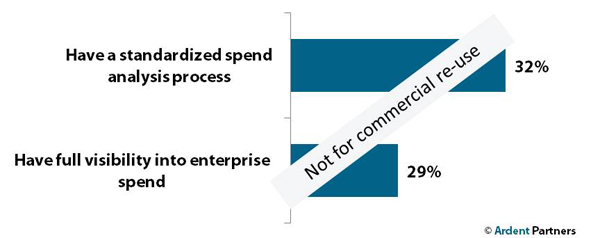We recently discussed the importance of having and maintaining a sourcing pipeline, arguing that “that the development of a sourcing pipeline remains one of the most important activities for any procurement organization.” We plan to continue this discussion by looking at how organizations can and should develop their pipelines.
Having done this work for a good number of Fortune 500 clients in my strat. sourcing consulting days, I can attest to the fact that the development, maintenance, and execution of a sourcing pipeline can be quite nuanced. [Sidebar: this level of nuance is one reason why I enjoy sourcing so much – it’s never boring]. In fact, there are many considerations which go into the selection and prioritization of the different categories that become the pipeline. And, while there are many common strategies that work well across different companies and industries, what always works best for one company, may not yield success within another.
Building a significant, multifaceted sourcing plan that runs over an extended period of time is absolutely a blend of art and science. It is why so many companies struggle to maintain momentum in their sourcing programs for any extended period of time. Which brings us to spend and….
The State of Spend Analysis in 2012
A critical factor in the successful development of a sustainable sourcing program is having a clear understanding of what you are buying and from whom – this is spend visibility. Having spend visibility is the lab that enables the sourcing science to be performed and having spend visibility is the studio that enables the sourcing art to be created. One reason why so many companies struggle with sourcing is that they lack visibility into spend. Here’s what I mean:
 Yes, only 29% of all enterprises have enterprise-level visibility into their spend.
Yes, only 29% of all enterprises have enterprise-level visibility into their spend.
Despite the market-proven impact that spend visibility can have on improving procurement performance metrics as well as the seemingly obvious business benefits from making business decisions with greater knowledge and context, far too many procurement departments fail to invest the necessary time and resources in the development of a spend analysis program that achieves true visibility.
That last paragraph is a nice way of putting it, but I am seething as I write this (not angry at anyone or anything, just frustrated).
Is it any wonder that many procurement departments struggle for relevance as they struggle for savings? No, it is not, because you cannot manage what you cannot see.
A cooler head was prevailing when I discussed this topic in a broader way in the recent report, “CPO Rising 2011: The State of Spend Analysis” which is part of our CPO Rising 2011: Innovative Ideas research series. This featured report, which is a solid, concise read was sponsored by SAP and is available for download (registration required) here (the report is currently the second report from the top).
Postscript: More on this next week.
Tagged in: Ardent Partners Research, Solution Providers, Sourcing, Spend Analysis, Strategy, Technology








